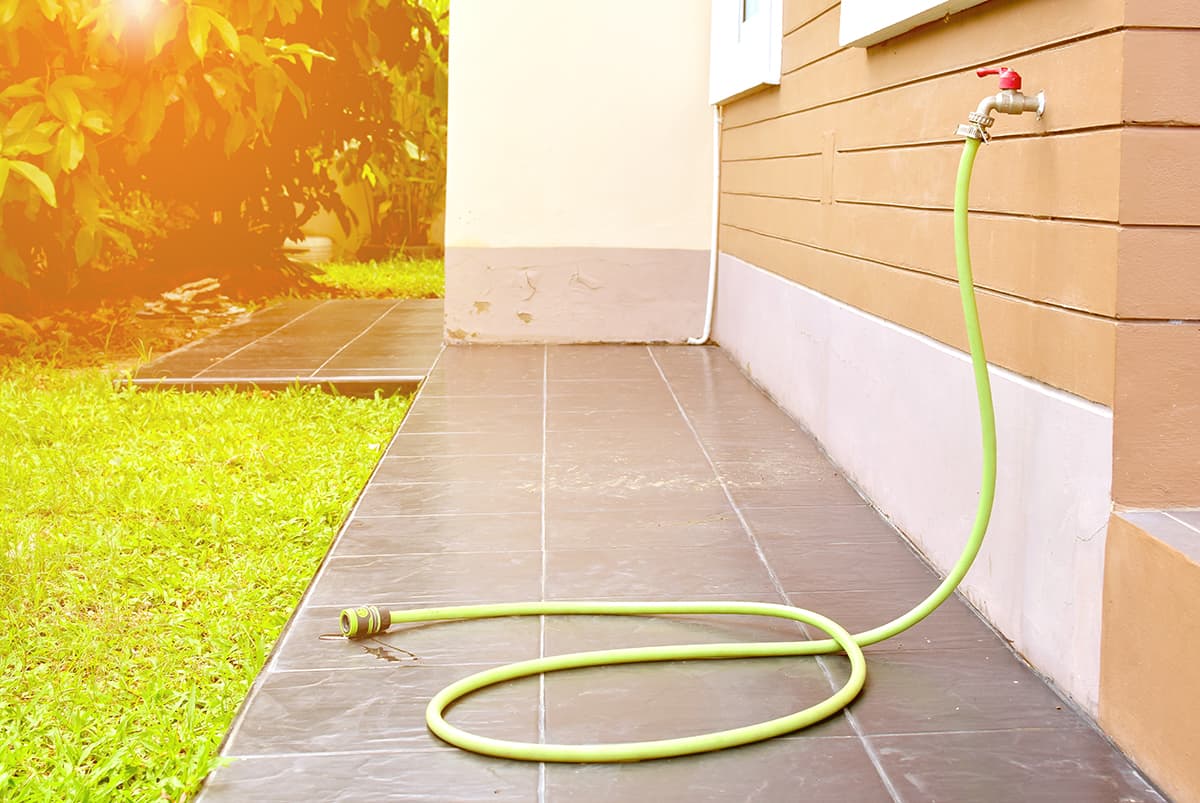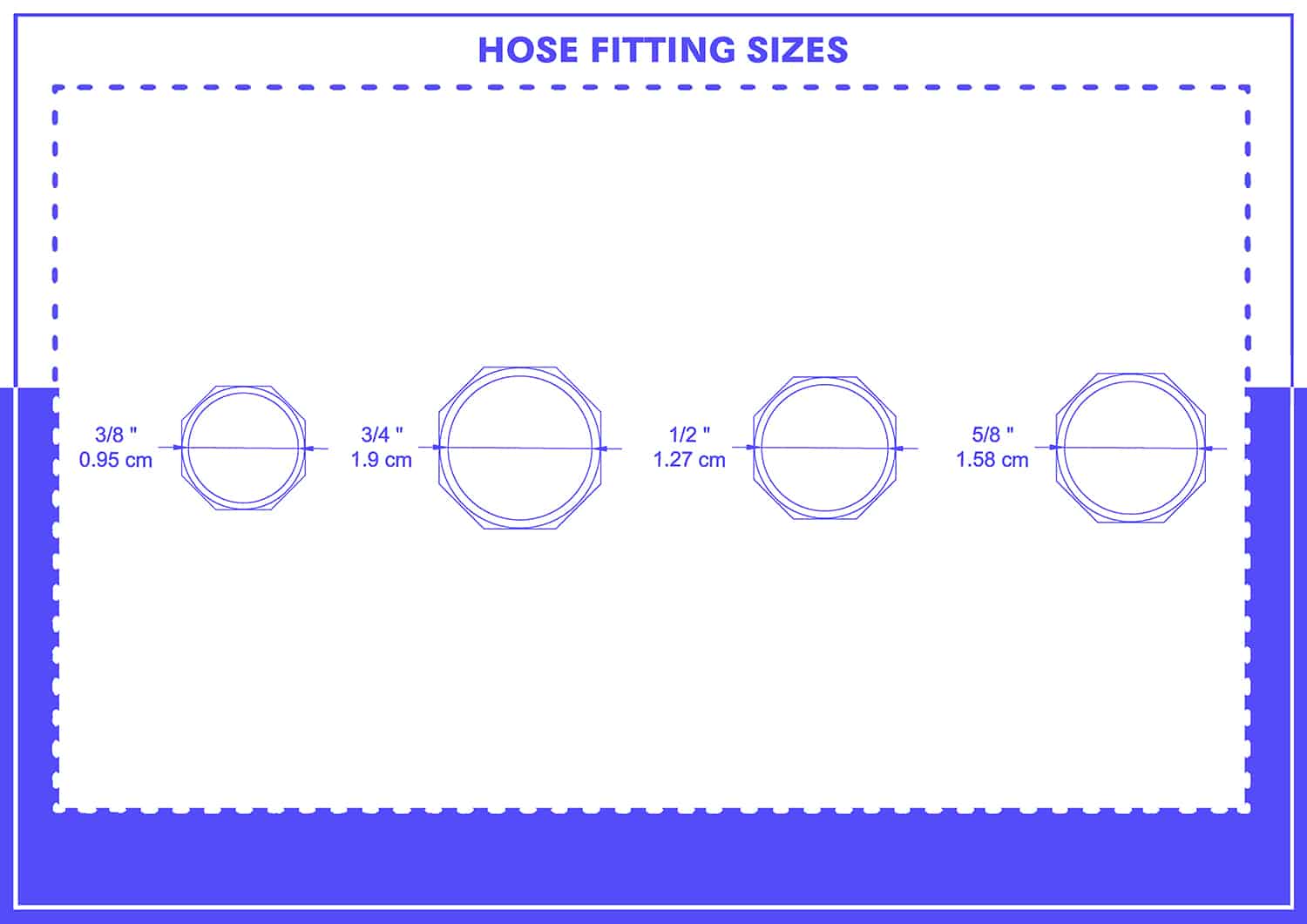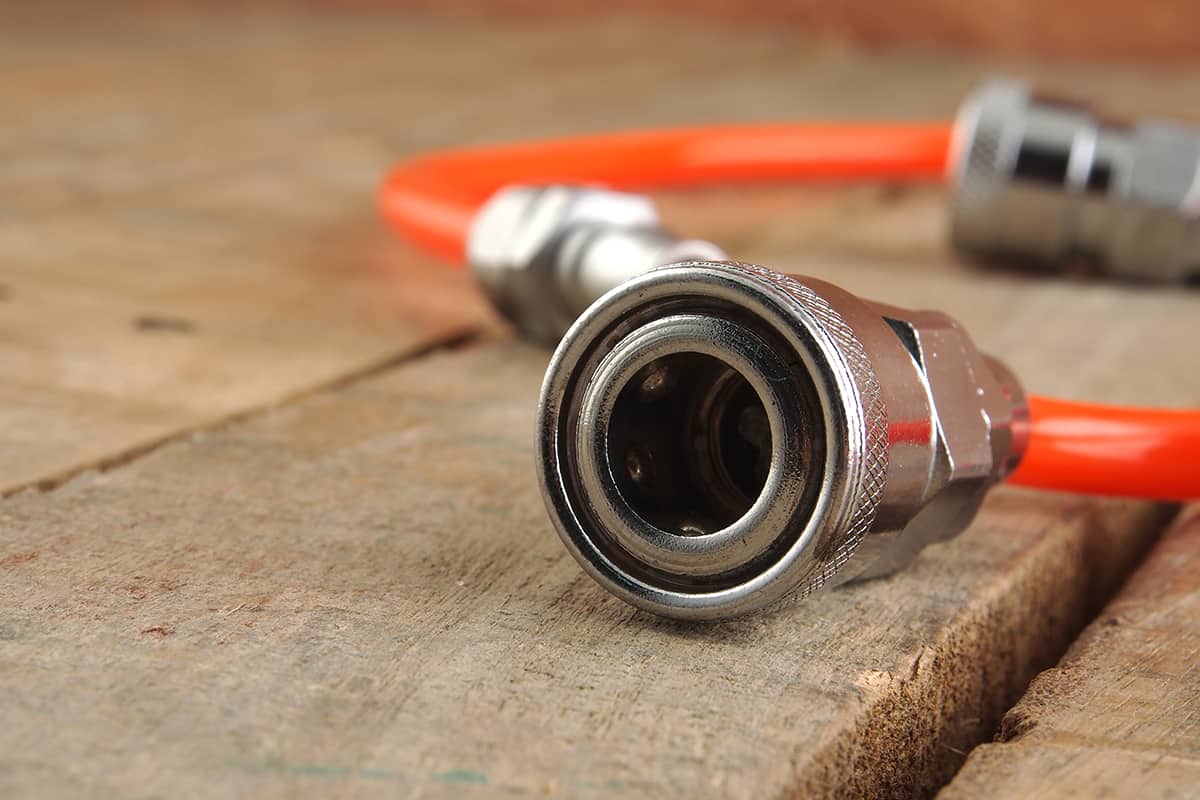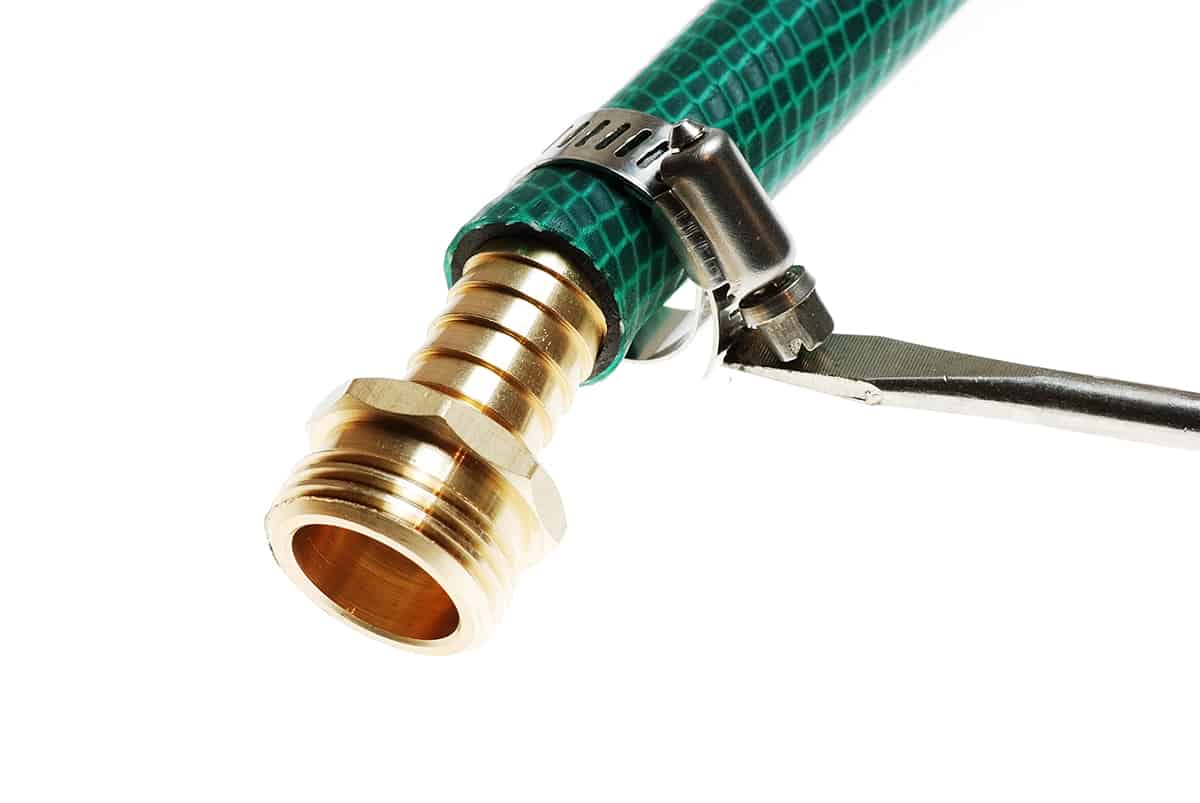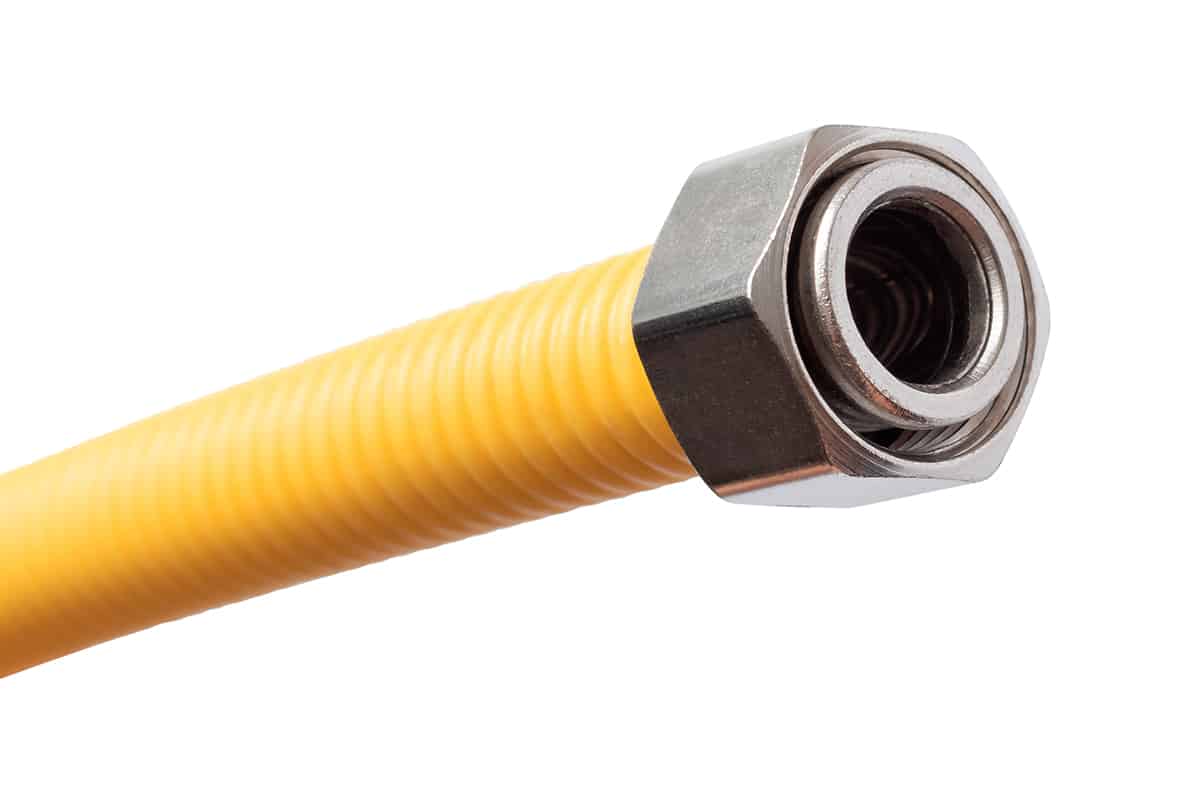A garden hose is an essential piece of equipment for anyone who owns a home, which will enable you to water your plants, irrigate your lawn, wash your car, or hose down your deck or patio.
In order for your garden hose to work, it will need a hose fitting that connects it to the outdoor faucet, typically positioned on the back or side of a home.
A hose fitting is also required if you want to use a sprinkler or spray gun. Here we will look at the standard hose fitting sizes which you will need to choose from for your own garden hose.
Hose Fitting Sizes
A correctly sized hose fitting is necessary to ensure your hose works properly. A hose fitting that is not the right size will fail to connect the hose at all, or it may result in leaks or drips. A poorly fitting hose will also have a negative impact on water pressure.
There are several different sizes of hose fittings, but most garden hoses and their corresponding faucets will be compatible with one of a few common sizes.
The standard size range of outdoor faucets and their hose fittings include ⅜ inch, ¾ inch, ½ inch, and ⅝ inch. For residential purposes, the most common size among these is the ⅝ inch fitting, while commercial properties which need greater water pressure and flow will have a ¾ inch fitting.
Thread Size
The other size you’ll need to know is the thread size for your hose fitting. The thread is the lines or ridges you will see on the outside of a faucet and the inside of a hose connector. These ridges enable the hose and the faucet to be screwed together. The ridges on the hose and the ridges on the faucet need to correspond in terms of size to ensure a good fit.
In the US, standard thread size is commonly known as GHT, which stands for garden hose thread; however, the official name is NH, which stands for national hose. The most common thread pitch is 11.5NH, which is used for both residential and commercial hoses. This size relates to the number of threads per inch of the fitting, also known as TPI.
For example, a fitting with a thread pitch of 11.5NH will have 11.5 threads per inch. Garden hoses typically have fittings that are ⅝ inches and 11.5NH, while hoses used for commercial purposes are more likely to have fittings that are ¾ inches and 11.5NH.
When to Use a Hose Fitting
There are various scenarios where you will need a hose fitting to ensure good water flow and to make sure your hose works as it should. You will need a hose fitting if you want to connect two hoses together, which is preferable to having one long hose if you only need the extra length occasionally.
Having one extra-long hose is not ideal if you only need the extra length every now and again. This is because using an unnecessarily long hose on a regular basis can be frustrating as it is more likely to get caught around obstacles in the garden, and it will have a reduced water flow compared to a shorter hose. It will also take longer to empty out and take more space to store.
With the use of a hose fitting, you can connect two shorter hoses together to create one long hose on the occasions where a longer hose is called for. The hose fitting will ensure water pressure is maintained and also prevent leakages between the two hoses at the point where they join. You can also use a hose fitting to connect a hose to the tap and to connect a sprinkler to a hose.
Hose Fitting Types
Hose fittings will have threads on them that are described as either male or female. You will need to know the difference between the two in order to understand which type of fitting you need.
Male Threads
A hose fitting or faucet fitting will have threads that allow it to be joined to another fitting. If the threads are male, then they will need to be used with a corresponding female fitting of the same size in order to connect. You can easily tell if a thread is male by assessing whether the threads are on the outside or inside of a fitting. Male fittings will have their threads on the outside.
Female Threads
Female threads will be on the inside of a fitting, for example, on the inside of a hose or the inside of a faucet. These are less easy to spot, given that they are on the interior or a fitting and therefore slightly hidden from view.
Hose Fitting Shape
Hose fittings are most commonly tube-shaped, with threads that run parallel to each other. The other type of fitting is a tapered fitting, which becomes tighter the more the fittings are screwed into place. The parallel fittings, however, do not become tighter the more you turn them, and because of this, they will usually have extra measures in place to secure the fit and prevent leakage.
O-rings or rubber washers are most commonly used on parallel hose fittings for this purpose. Be sure to leave this in place, as if you remove them, you could be inadvertently compromising the integrity of the hose fitting.
Quick Release Fittings
These are a more modern type of hose fitting which don’t have threads and therefore doesn’t need to be twisted around to tighten or loosen them. They are a good option if you struggle to operate hose fittings with threads, but they are not seen as being quite as sturdy as threaded fittings because they are usually made from plastic instead of metal.
The option between quick-release hose fittings or threaded hose fittings comes down to personal preference, as there is not much difference in price or reliability.
